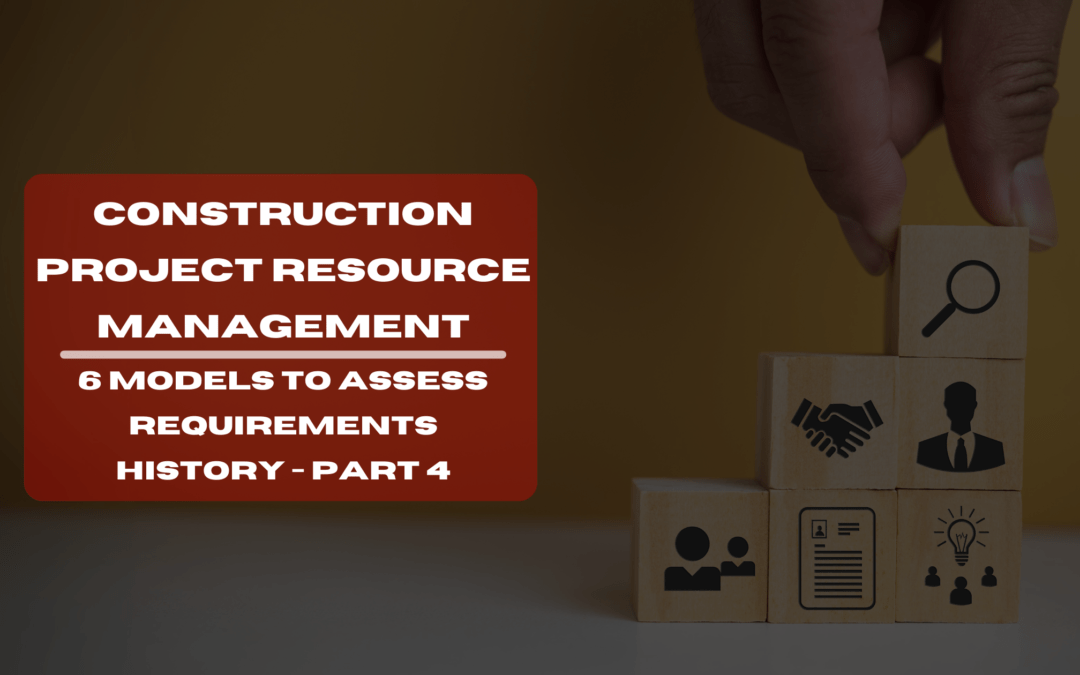Construction Project Resource Management Assessing Requirements: History Part 4
In the intricate world of Construction Project Resource Management, making informed decisions about resource allocation is crucial for project success. To aid in this process, various models and techniques have been developed over the years to assess resource requirements and streamline resource delivery. In this section, we will explore some of these essential models.
If you want to refer to previous parts of this series, you can read them here:
Part 1: Unearthing the Origins of Construction Project Resource Management
Part 2: Construction Project Resource Management Principles and Methodologies
Part 3: Top 8 Challenges in Construction Project Resource Management
Table of Contents
Model 1: Resource Histograms
Resource histograms provide a visual representation of resource allocation over time. They are particularly useful for identifying periods of resource over- or under-allocation. By plotting resource availability against project timelines, project managers can optimize resource allocation to ensure a smooth workflow.
Resource histograms enable project managers to identify resource peaks and valleys, allowing them to make adjustments to avoid bottlenecks or resource shortages. This visual tool helps in achieving resource balance throughout the project lifecycle.
Model 2: Resource Loading
Resource loading is a technique that involves assigning resources to specific project tasks based on their skillsets and availability. This model helps project managers ensure that the right resources are allocated to the right tasks at the right time.
By matching resource capabilities with task requirements, resource loading minimizes the risk of skill gaps or resource shortages. This model enhances efficiency and productivity by optimizing resource utilization.
Model 3: Resource Leveling
Resource leveling is a critical technique for addressing resource conflicts in construction projects. It aims to eliminate situations where resources are over-allocated or under-allocated, leading to scheduling conflicts.
This model involves redistributing resources to achieve a more balanced workload throughout the project schedule. By smoothing out resource allocation, project managers can prevent resource conflicts and ensure a more predictable project timeline.
Model 4: Critical Path Method (CPM)
The Critical Path Method (CPM) is a comprehensive project management model that considers both project tasks and resource constraints. CPM identifies the critical path, which represents the sequence of tasks that, if delayed, would delay the project’s overall completion.
CPM takes into account task dependencies and resource availability. It helps project managers prioritize tasks and allocate resources accordingly to ensure that critical activities are completed on time. This model enhances project control and ensures that resource allocation aligns with project goals.
Model 5: Earned Value Management (EVM)
Earned Value Management (EVM) is a performance measurement model that integrates scope, schedule, and cost aspects of a project. While primarily used for cost management, EVM also plays a role in resource management by providing insights into resource utilization and efficiency.
EVM allows project managers to assess whether the value of work performed matches the planned value, helping identify resource-related issues early. It aids in monitoring resource costs and performance, contributing to effective resource management.
Model 6: Building Information Modeling (BIM)
Building Information Modeling (BIM) is a technology-driven model that has transformed resource management in construction projects. BIM enables project managers to create a digital representation of the project, including all its components and resources.
By visualizing the project in a digital environment, project managers can optimize resource allocation, detect clashes, and simulate construction sequences. BIM enhances collaboration among project stakeholders and improves resource management accuracy.
Conclusion
These models for assessing Construction Project Resource requirements and delivery are invaluable tools for project managers and professionals in the field. Each model offers a unique perspective on resource allocation, enabling project managers to make informed decisions that lead to successful project outcomes.
In the final part of this article, we will summarize the evolutionary significance of these methodologies and explore their continued relevance in today’s construction industry, emphasizing the importance of adaptability and innovation in the ever-evolving field of Construction Project Resource Management.

